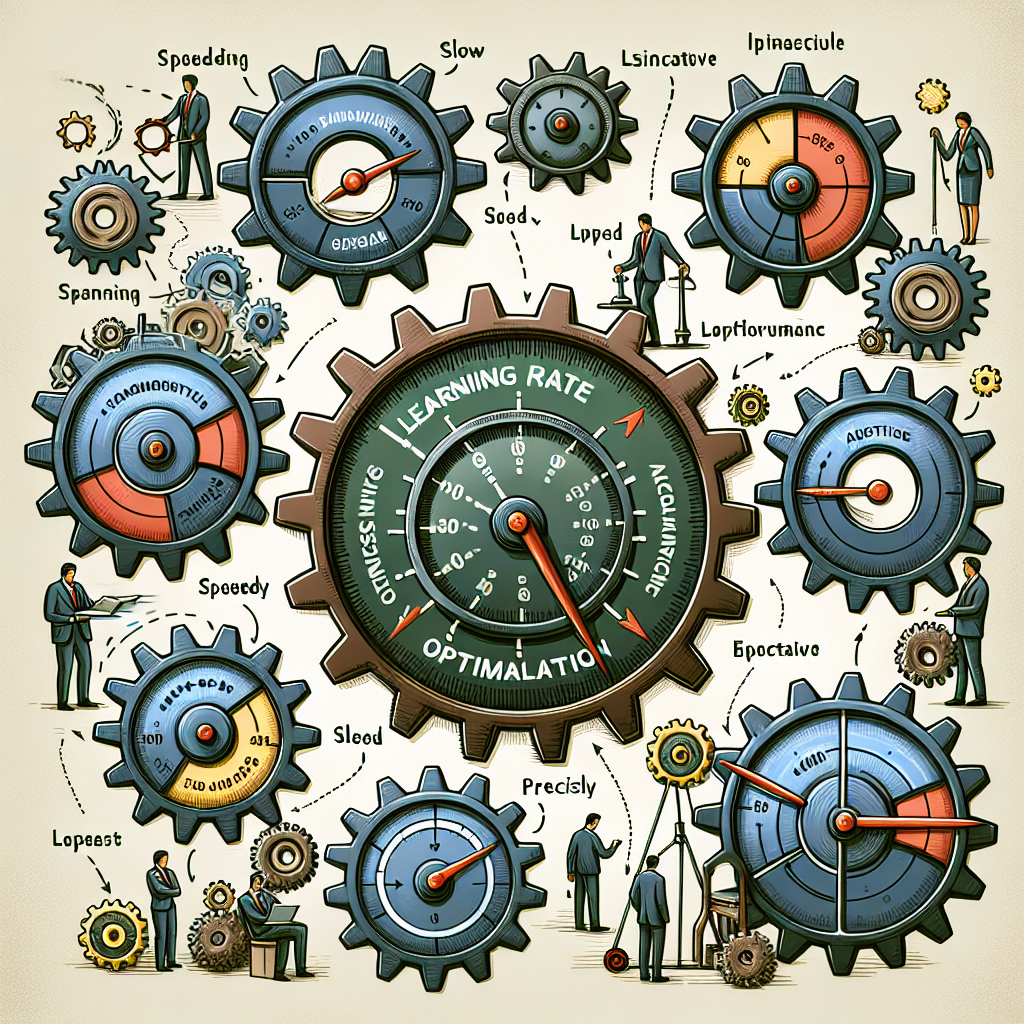In the world of machine learning, particularly in training deep learning models, the learning rate is a critical hyperparameter that can make or break your model's performance. It influences how quickly a model learns and can be the difference between a highly accurate model and one that fails to converge.
Understanding and optimizing the learning rate is crucial, whether you're using frameworks like PyTorch Lightning or experimenting with models like DreamBooth. In this article, we dive deep into the concept of learning rate, how to find the sweet spot for your model, and the role of learning rate schedulers in optimizing your training process.
Understanding the Learning Rate
The learning rate is a scalar used in training machine learning algorithms, typically in the context of gradient descent, which is used to update the weights of the model. It determines the size of the steps the algorithm takes towards the minimum of the loss function. A too-large learning rate may cause the model to overshoot the minimum, while a too-small rate might result in a long training process that could get stuck in local minima.
The Goldilocks Principle: Neither Too High Nor Too Low
The ideal learning rate is one that is just right – it should allow the model to converge to a good solution quickly without overshooting. Finding this balance can be challenging and often requires experimentation.
The Impact of Learning Rate on Model Convergence
The learning rate directly impacts how quickly a model learns. If the learning rate is set correctly, the model will converge to a good solution in fewer epochs. Conversely, an incorrect learning rate can lead to poor convergence, either overshooting the minimum or converging too slowly.
Finding the Optimal Learning Rate
The process of finding the optimal learning rate often involves trial and error, but several strategies can make this process more systematic and efficient.
The Learning Rate Range Test
One popular method for finding a good initial learning rate is the learning rate range test. This involves starting with a small learning rate and gradually increasing it each iteration or epoch and plotting the loss. The learning rate just before the loss starts to increase is often a good choice.
PyTorch Lightning Learning Rate Scheduler
PyTorch Lightning offers built-in support for learning rate schedulers, which can help automate the process of adjusting the learning rate during training. By using a scheduler, you can implement strategies like learning rate annealing or cyclical learning rates without manually changing the learning rate.
DreamBooth Learning Rate Considerations
When working with models like DreamBooth, it's important to consider the specifics of the model and the dataset when setting the learning rate. DreamBooth's unique approach to training generative models means the learning rate may need to be tuned differently than in more traditional models.
Learning Rate Schedulers: A Key to Successful Training
A learning rate scheduler adjusts the learning rate during training, usually by reducing it according to a pre-defined schedule. This can help avoid issues with the learning rate being too high or too low as the model approaches convergence.
Types of Learning Rate Schedulers
There are several types of learning rate schedulers, including step decay, exponential decay, and cyclical learning rates. Each has its own advantages and is suited to different types of problems and training schedules.
Step Decay
In step decay, the learning rate is reduced by a factor after a certain number of epochs. This is a simple and widely used approach that can be effective for many problems.
Exponential Decay
Exponential decay reduces the learning rate by a factor of the previous learning rate, typically each epoch. This can lead to a more fine-grained adjustment of the learning rate as the training progresses.
Cyclical Learning Rates
Cyclical learning rates involve cycling the learning rate between two bounds. This can help the model escape local minima and potentially lead to better solutions.
Implementing Learning Rate Schedulers in PyTorch Lightning
PyTorch Lightning simplifies the implementation of learning rate schedulers with its modular approach. By defining a scheduler and attaching it to the trainer, you can easily control the learning rate during training.
Best Practices for Optimizing Learning Rate
There are several best practices to follow when trying to optimize the learning rate for your machine learning models.
Start with a Pre-Trained Model
Starting with a pre-trained model can allow you to use a lower learning rate, as the model has already learned some useful patterns. This can speed up convergence and improve performance.
Use a Warm-Up Period
A warm-up period involves starting with a low learning rate and gradually increasing it. This can help stabilize training in the early stages before switching to a more aggressive learning rate schedule.
Monitor Performance Closely
It's important to monitor the performance of your model closely when experimenting with learning rates. Tools like TensorBoard can help visualize training progress and make it easier to spot when the learning rate is too high or too low.
Experiment with Different Schedulers
Don't be afraid to experiment with different learning rate schedulers. Sometimes the best approach is not immediately obvious, and what works well for one problem may not work as well for another.
Optimizing the learning rate is a crucial step in training effective machine learning models. By understanding the principles behind learning rate optimization and leveraging tools like learning rate schedulers, you can significantly improve the performance of your models. Remember to start with a learning rate range test, consider the specifics of your model and dataset, and monitor performance closely as you adjust the learning rate throughout training.
Whether you're using advanced frameworks like PyTorch Lightning or training specialized models like DreamBooth, a well-optimized learning rate can make the difference between a model that performs well and one that doesn't live up to its potential. Take the time to experiment and find the learning rate that works best for your specific use case, and you'll be well on your way to machine learning success.
By following the strategies outlined in this article and staying up-to-date with the latest tools and techniques, you can ensure that your learning rate is optimized for success in any machine learning project.












.jpg)

.jpg)


0 Comments